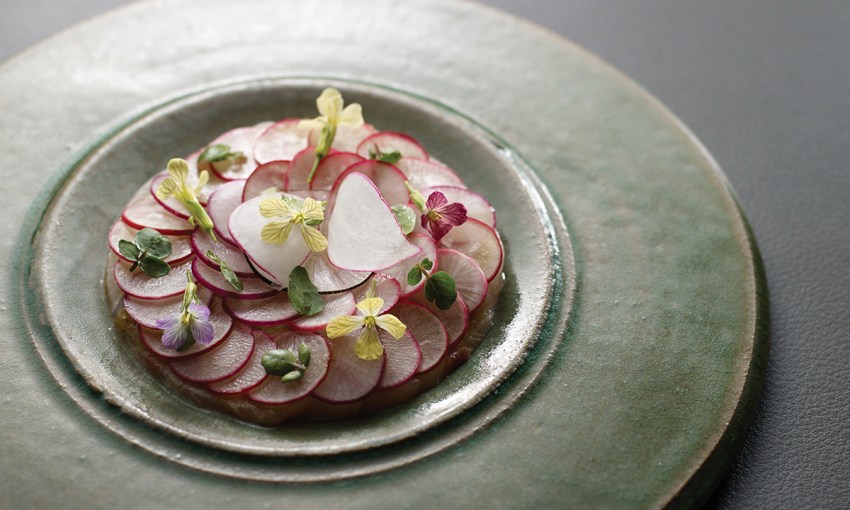Three of Adelaide’s top chefs describe the story behind their favourite dish to serve at their fine dining restaurant and why it stands out from the rest.
Plated perfection: The finest of dining
Delicate and beautifully elegant, Scott Huggins’ kingfish ponzu is a prime example of his team’s quest for culinary excellence at Magill Estate Restaurant.
Despite its simple appeal, the refined dish is one of the more intricate plates to prepare, particularly as the radish must be sliced to the same diameter and the elements must be combined at precisely the right time.
“It’s one of the more challenging dishes to plate because it is time consuming. It’s quite therapeutic, because you can’t rush it and you’ve got to have all the circles balancing together. Time stops when you’re trying to get four or five done at the same time; it’s difficult to have them all perfect,” Scott says.
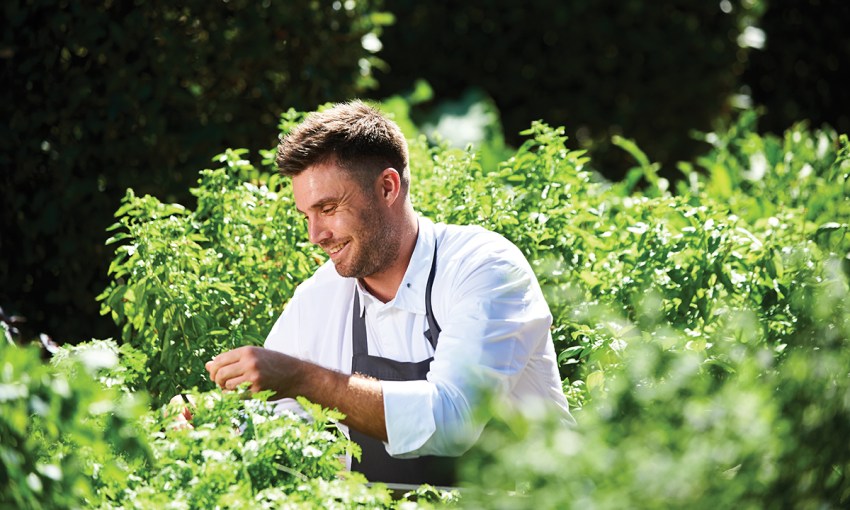
The top loin and belly of the kingfish are sliced and placed on the plate, seasoned with kombu for an umami flavour, and then a dash of smoke oil. For the ponzu dressing, chives are frozen in liquid nitrogen, blitzed into an ultra-fine powder and mixed with lime juice.
The ponzu is added at exactly the right time – not too long or it will start to cure the fish – before the radishes are sliced and added with pin-point accuracy. Although it’s not currently on the menu, this dish has been available on-and-off for about eight years and relies on radish being in season.
The recipe is a gem that Scott perfected while working at Tokyo restaurant Nihonryori Ryugin under chef Seiji Yamamoto. “The ponzu dressing was one of the first things I had to make for Yamamoto. The one thing I took away from working at Ryugin was that there are many things you can’t replicate if you can’t get the ingredients, but for this we had everything we needed to make it work,” he says.
“We made the dressing using the daikon that we grew in the garden and the fish came from Port Lincoln – it all came together. It’s a very simple-looking dish and that’s why I like it, I enjoy plating it because it’s technical. I don’t think people realise the level of detail that goes into a dish like this until they’ve been in the kitchen to see the layers of technique and flavours.”
The dish is garnished with radish or rocket flowers, which are picked from the restaurant garden. On such an elegant dish where nothing is wasted, the flowers are there for their specific taste, not simply for looks.
“I love food. It makes me smile and I get so much joy out of it, but I also look at each service and ask, what can we do better? That’s what my enjoyment is, chasing perfection.”
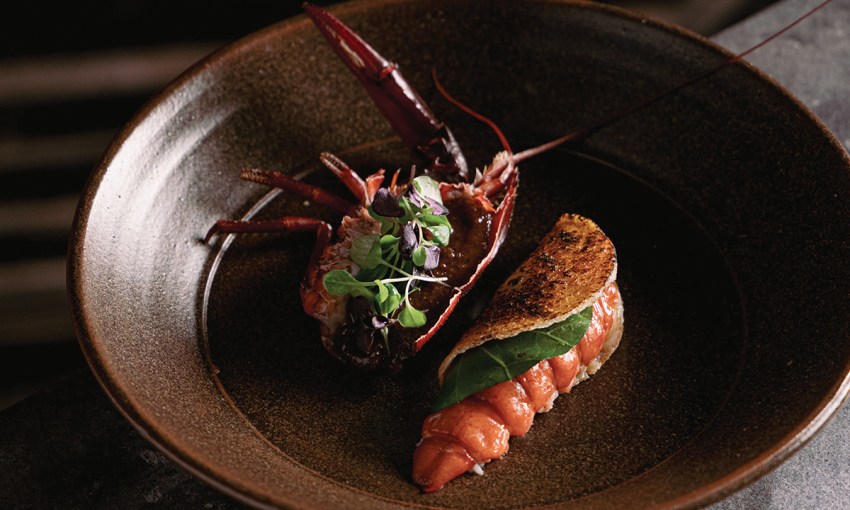
A lot of pressure rests on a first-course dish at a restaurant with a reputation such as that of three-chefs-hatted Hardy’s Verandah.
Head chef Jin Choi says one of his favourite dishes to serve is an eye-catching presentation of marron with a Thai twist – the perfect first-course to set the scene for an incredible dining experience.
“I think this is a perfect starter to a meal. It’s not overly technical because as a first course I don’t want to overcomplicate the flavours. I want to it to be simple, tasty and fresh, so customers will be excited for the next dish,” Jin says.
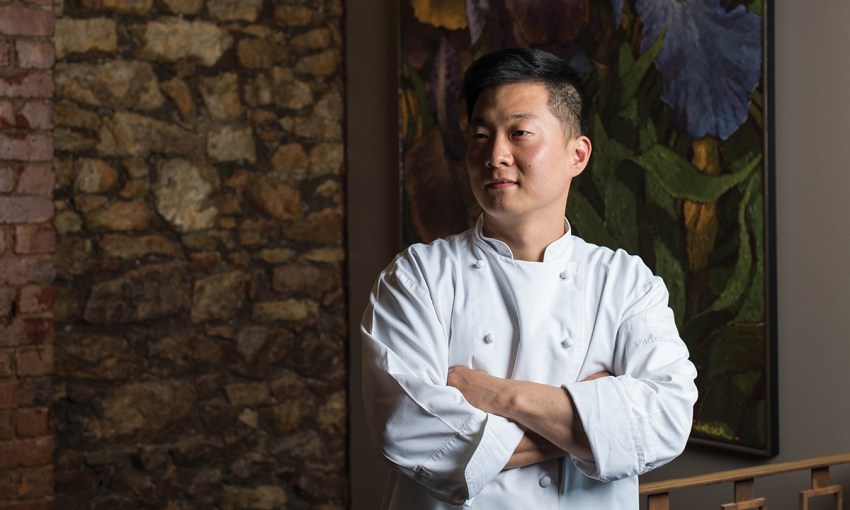
Sourced from an Adelaide Hills marron farm, the freshwater shellfish is blanched in salted water for just two minutes and refreshed in ice water. It is then served inside a taco-like caramelized coconut milk skin, plated alongside the head, which is filled with a sweet, salty and sour jeow bong chilli paste.
The dish is topped off with nasturtium leaves and basil microgreens from the garden that complement the delicate texture and flavours. Hailing from South Korea, Jin thrives on inspiration from a range of different cultures and cuisines.
“The caramelised coconut gives texture and coconut flavour and then the chilli and tamarind paste is a Thai sauce which is salty, sweet and sour, so all the flavours balance perfectly,” says Jin.
Marron is a premium ingredient that has graced the menu at Hardy’s Verandah for the past three years – each time with different presentations and flavours.
“The chefs working with me are all really interested in working with marron, which is very unique to Australia. Other countries have a similar freshwater crayfish, but nothing is quite like it,” says Jin.
When creating a new dish, Jin taps into his bank of memories from dining out with friends and family, working with other chefs or reading books. He takes great satisfaction in creating a special new dish for guests.
“Australia is a very multicultural society and I really enjoy the sharing of culture and ideas. Working as a chef there’s stress, pressure and working long hours, and it’s a dangerous environment, but I am really proud that we make people happy,” he says.
“We work really hard and we serve our own effort on the plate and it’s rewarding to see people get happiness from that.”
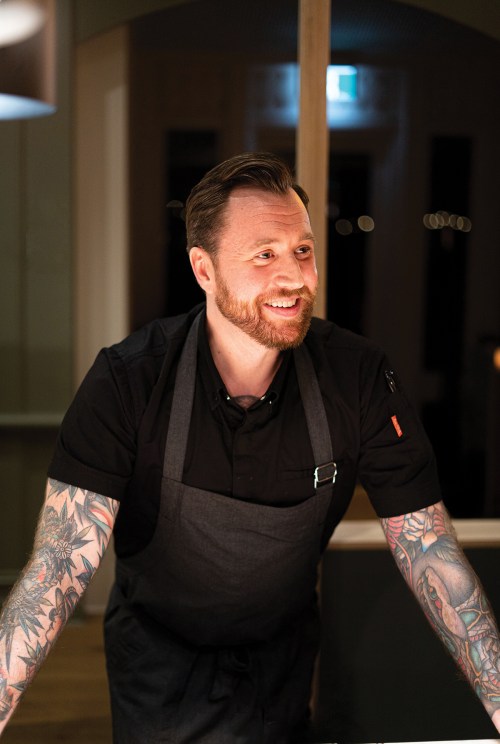
Since launching the new-look Restaurant Botanic within the Adelaide Botanic Garden, Justin James’ creativity has been working in overdrive. While the restaurant uses myriad luxury ingredients such as abalone, Murray cod and black truffle, Justin also likes to think outside of the box.
“I don’t think there’s any other restaurants serving a dish prepared with dead branches of the bunya bunya tree and that’s why I think this is one of my favourite luxury items,” says Justin.
Don’t let this unpretentious dish fool you – the kitchen is often complimented by guests that it’s the greatest dessert they’ve ever tasted.
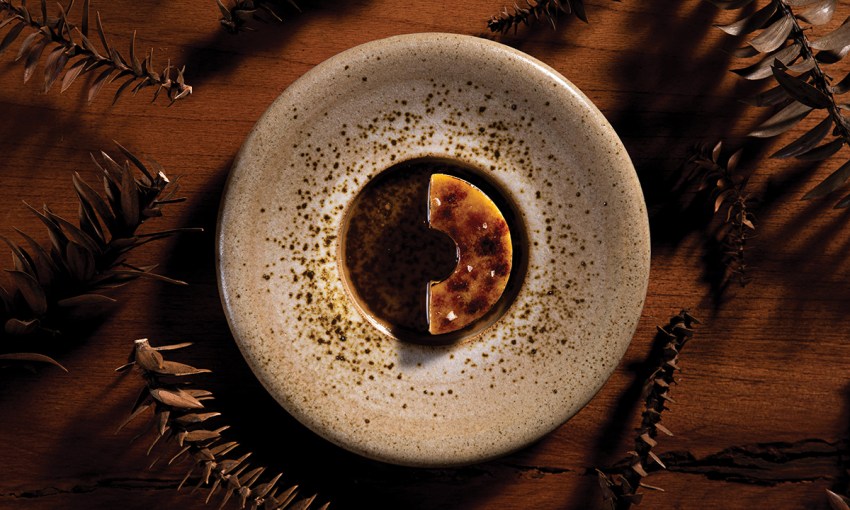
The restaurant has exclusive access to use ingredients from within the gardens, such as lemon aspen, lemon myrtle, Geraldton wax, juniper and bay leaves. For this dish, Justin was determined to use the bunya bunya tree as a central ingredient.
“Looking at the tree and seeing what was there, I saw the dead branches as an opportunity,” he says.
“We have this terminology of nose to tail, using the entire animal, but you can also use the entire plant. There’s the roots, the leaves, the stem and the bark, and they all have different flavours.”
The branches are picked from the ground, cleaned, roasted and infused into cream and other ingredients, then seasoned with sugar to counter the bitterness. The cream is then frozen into moulds, popped out and seasoned with a little more sugar before being torched. The sauce takes more than three weeks to age.
“When you eat this dessert, you’re sitting in the dining room surrounded by the Botanic Garden and the dish even tastes like the Botanic Garden; that’s what a luxury moment is to me,” says Justin.
“I was trying to push the boundaries to create a new flavour and I would have been happy with people saying that was good, interesting, or different, but – to put it in the humblest way – guests have been blown away.
“It’s an open kitchen and I try to talk to every table that comes in and day-in, day-out they say it’s the best dessert they’ve ever had. I could have put something else on the dish, but I think it would lose the integrity of what I was trying to achieve for that dish. It was just a dish made from dead branches.”
It’s perfectly clear when the chef nails a dish that he’s been working on for a few weeks. “I give myself a little high five and I do a little dance. The chefs can see when I make something that I think is really good,” Justin says.
This article first appeared in the September 2021 issue of SALIFE magazine.



